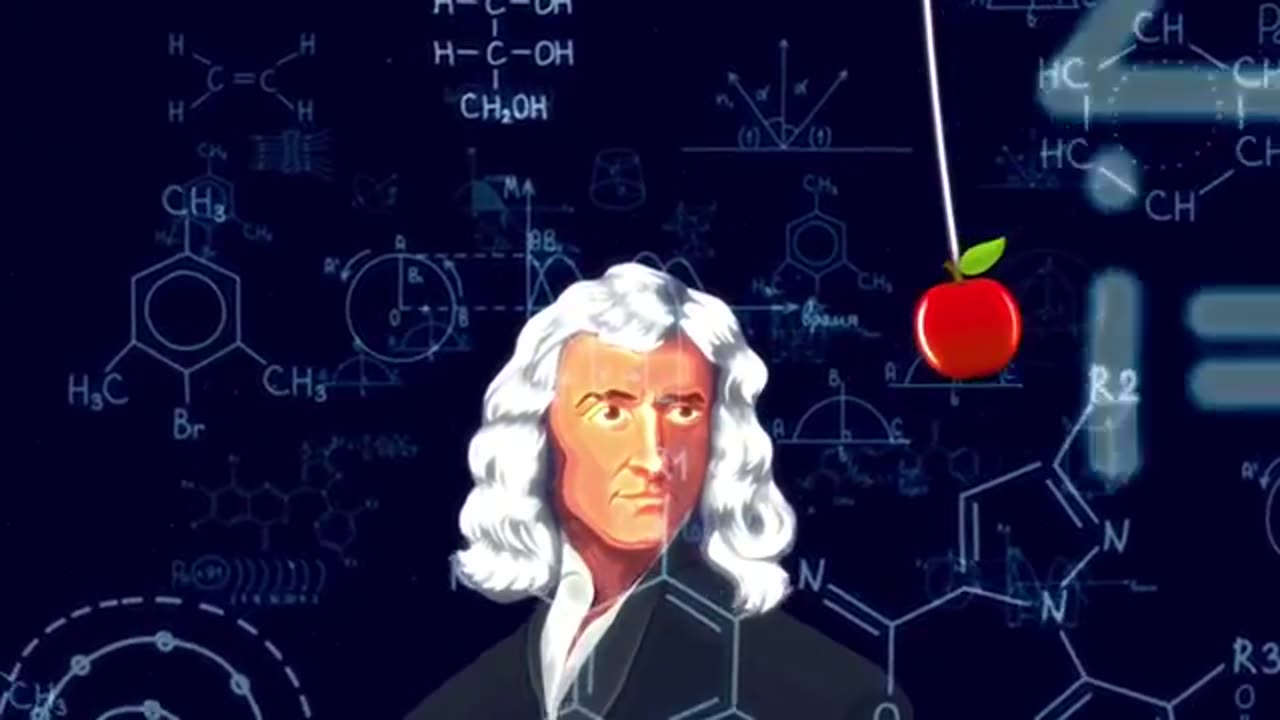Premium Only Content

If light has no mass, why is it affected by gravity General Relativity Theory
The fact that light is affected by gravity despite having no mass is one of the fascinating predictions of **Einstein's General Theory of Relativity**. Here’s an explanation of how this works:
---
### **1. Newtonian View vs. General Relativity**
- **Newtonian Gravity:** In classical physics, gravity is a force between two masses. Since light has no mass, it wouldn’t be affected by gravity according to Newton’s laws.
- **General Relativity:** Einstein’s theory revolutionized our understanding by showing that gravity isn’t a force in the traditional sense. Instead, massive objects curve the **fabric of spacetime**, and this curvature affects the motion of all objects, including light.
---
### **2. Spacetime Curvature and Light**
- In General Relativity, massive objects like stars or black holes create a "dent" in the spacetime around them, similar to how a heavy ball placed on a stretched rubber sheet distorts its surface.
- Light follows the shortest path in spacetime, known as a **geodesic**. When spacetime is curved, these geodesics are also curved, causing light to bend as it passes near a massive object.
---
### **3. Experimental Proof: Gravitational Lensing**
This bending of light was first observed during a solar eclipse in 1919:
- **Observation:** Stars near the Sun's edge appeared displaced because their light was bent by the Sun's gravity. This phenomenon, called **gravitational lensing**, was one of the first experimental confirmations of General Relativity.
- **Modern Applications:** Gravitational lensing is used in astronomy to study distant galaxies and dark matter.
---
### **4. Energy and Momentum in Relativity**
Even though light has no rest mass, it:
- **Carries Energy:** According to Einstein’s famous equation, \(E = mc^2\), energy is equivalent to mass.
- **Has Momentum:** Light has momentum (\(p = E/c\)), which means it interacts with spacetime curvature despite lacking mass.
In General Relativity, the source of gravity is not just mass but the **stress-energy tensor**, which includes energy, momentum, and stress. Light's energy and momentum contribute to this tensor, allowing it to interact with gravity.
---
### **5. Photon Trajectories in Curved Spacetime**
Light always travels at the speed of light (\(c\)) in a straight line locally. However, in a curved spacetime, what appears "straight" is actually curved globally:
- **Example:** Around a black hole, light can even orbit in a region called the **photon sphere** if it gets close enough.
- **Escape Velocity:** If light falls within the event horizon of a black hole, spacetime curvature becomes so extreme that no path leads outward, and the light is trapped.
---
### **6. Why Light is Affected by Gravity**
In simple terms:
- Gravity doesn’t act on light because of mass (as Newtonian physics might suggest).
- Instead, gravity bends the spacetime through which light travels, causing light to follow a curved path.
---
### **Summary**
Light is affected by gravity because it follows the curvature of spacetime, not because it has mass. This insight from General Relativity fundamentally changed our understanding of gravity and the universe, explaining phenomena like black holes, gravitational waves, and the bending of light by massive objects.
-
 3:12:08
3:12:08
MyronGainesX
7 hours ago $4.91 earnedDan Bongino Named As Deputy Director Of FBI And CPAC Recap
73.1K25 -
 3:12:31
3:12:31
vivafrei
6 hours agoBarnes Live from Seattle - Defending Benshoof in a Case that is CRAY CRAY!
88.2K31 -
 2:12:12
2:12:12
Robert Gouveia
6 hours agoLiberals EXPLODE over Elon's Email; Lawsuits FLY; Sanctions?? Congrats Dan!
62.3K26 -
 1:33:36
1:33:36
Redacted News
7 hours agoBREAKING! PUTIN LAUNCHES MASSIVE OFFENSIVE IN UKRAINE AS EUROPEAN LEADERS PUSH FOR MORE WAR
151K223 -
 44:39
44:39
Kimberly Guilfoyle
8 hours agoBetter Days Ahead for the FBI, Live with Asm Bill Essayli & John Koufos | Ep.199
96.4K25 -
 1:40:29
1:40:29
In The Litter Box w/ Jewels & Catturd
1 day agoWhat Did You Do Last Week? | In the Litter Box w/ Jewels & Catturd – Ep. 748 – 2/24/2025
137K40 -
 23:34
23:34
Stephen Gardner
7 hours ago🔥CNN PANICS over $5000 DOGE Dividend | Trump Orders bigger Audits
84.9K137 -
 1:53:54
1:53:54
The White House
9 hours agoPresident Trump Holds a Press Conference with President Emmanuel Macron of France
95.6K83 -
 1:48:31
1:48:31
The Officer Tatum
9 hours agoLIVE MSNBC DROPS HAMMER On Joy Reid as STAFFERS PANIC! + More Ep 67
128K84 -
 59:36
59:36
Chad Prather
9 hours agoTRUMP TAPS DAN BONGINO TO HELP LEAD FBI - IT’S OVER FOR THE DEEP STATE!
94.2K67